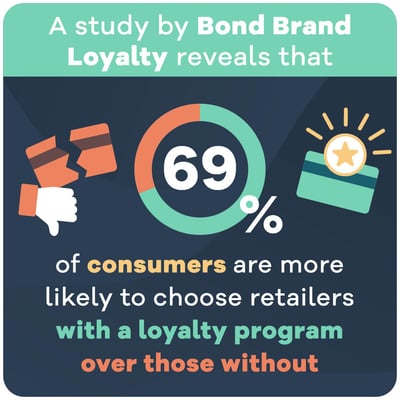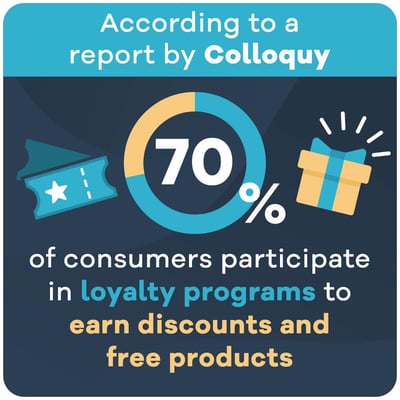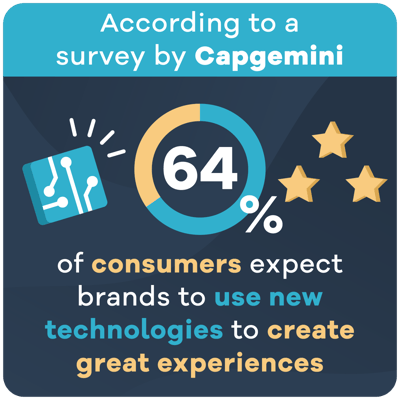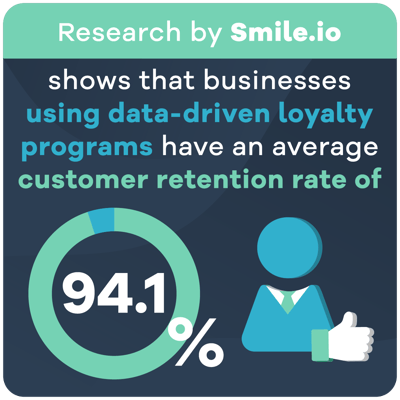Customer loyalty is worth its weight in gold. One of the most effective ways to foster and maintain this loyalty is through a well-executed retail loyalty program.
In this comprehensive guide, we will take you through the step-by-step process of launching a retail loyalty program, offering valuable statistics and insights to help you maximize the impact of your efforts.
Step 1: Understand the Power of Loyalty Programs
Before diving into the specifics of launching a retail loyalty program, it's important to recognize the significant impact such programs can have on your business.
A study by Bond Brand Loyalty reveals that 69% of consumers are more likely to choose retailers with a loyalty program over those without.

Step 2: Define Clear Objectives
Begin by setting clear and measurable objectives for your loyalty program. Whether it's increasing customer retention, boosting sales, or improving customer engagement, defining your goals is the first critical step.
Step 3: Identify Your Target Audience
Understanding your target audience is key to designing a successful loyalty program. Conduct market research to gain insights into your customers' preferences, behaviors, and demographics.
Step 4: Design the Loyalty Program
Once you've defined your objectives and identified your audience, it's time to design your loyalty program. Create a clear plan that outlines the structure, rewards, and any potential challenges you may encounter.
According to a report by Colloquy, 70% of consumers participate in loyalty programs to earn discounts and free products.

Step 5: Set a Realistic Budget
Implementing a loyalty program involves financial investment. Determine a budget that covers the costs of rewards, marketing, and technology while ensuring profitability.
Step 6: Choose the Right Technology
Select the appropriate technology to support your loyalty program. Whether it's a mobile app, a points-based system, or a dedicated website, the technology should align with your program's objectives.
According to a survey by Capgemini, 64% of consumers expect brands to use new technologies to create great experiences.

Step 7: Marketing and Promotion
Effectively market and promote your loyalty program to create excitement and awareness among your customers.
Step 8: Monitor and Analyze
Once your loyalty program is live, closely monitor its performance. Track key metrics such as customer engagement, retention rates, and return on investment.
Research by Smile.io shows that businesses using data-driven loyalty programs have an average customer retention rate of 94.1%.

Step 9: Continuously Improve
Use insights from your monitoring and analysis to make necessary improvements to your loyalty program. Adapt to evolving market conditions and changing customer preferences.
Step 10: Expansion and Evolution
Loyalty programs should not remain static. As your business grows, consider expanding or evolving your program to maintain its appeal.
A survey by Deloitte revealed that 48% of consumers expect loyalty programs to offer better rewards as time goes on.

Step 11: Gather Customer Feedback
Always be open to customer feedback. Listening to your customers and acting on their suggestions is vital for the long-term success of your loyalty program.
In conclusion, launching a successful retail loyalty program is a strategic process that requires thorough planning and continuous adaptation. By following these steps and paying attention to the included statistics, you can develop a loyalty program that not only attracts customers but also keeps them engaged and coming back for more, ultimately enhancing the growth and profitability of your retail business.




